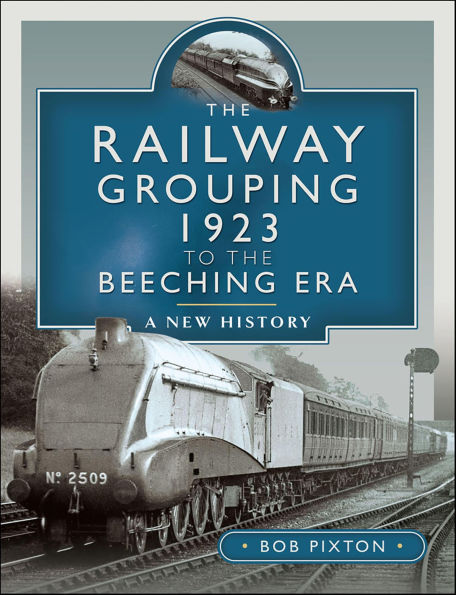British railways evolved through wars and state control, facing innovations like diesel engines and challenges from road transport amid financial struggles. When King George V ascended to the throne in 1910, world trade was increasing and at home the country's private enterprise railways were booming with larger trains and more freight being carried than ever before. Over the next fifty years the country had experienced not one, but two world wars. Railways had been forcefully reorganized, not once but twice, eventually becoming state owned. With the Government now in control of the railway's finances, reformation was on the horizon in the medicine of Dr. Beeching. This volume sets out to chart the passage of the railways during these turbulent times. Contrary to popular belief, life on the railways during these times was not all doom and gloom but times of innovation, competition, new buildings, new lines and the spread of electrification. This was the era of faster, larger, non-stop expresses, streamlined trains: we even showcased our best trains abroad, not once but twice! More and more people were taking holidays by trains and holiday camps emerged. Challenging the position of steam engines were new diesel locomotives. The Festival of Britain (1951) and the Coronation of Elizabeth (1953) saw the country emerge from the devastation and crippling debt after World War 2. On the horizon were devastating rivals that wounded the previously unassailable position of steam trains: motor lorries and family cars. With looming unsustainable finances, the Government solicited external help to help sort out matters.
1145488967
The Railway Grouping 1923 to the Beeching Era: A New History
British railways evolved through wars and state control, facing innovations like diesel engines and challenges from road transport amid financial struggles. When King George V ascended to the throne in 1910, world trade was increasing and at home the country's private enterprise railways were booming with larger trains and more freight being carried than ever before. Over the next fifty years the country had experienced not one, but two world wars. Railways had been forcefully reorganized, not once but twice, eventually becoming state owned. With the Government now in control of the railway's finances, reformation was on the horizon in the medicine of Dr. Beeching. This volume sets out to chart the passage of the railways during these turbulent times. Contrary to popular belief, life on the railways during these times was not all doom and gloom but times of innovation, competition, new buildings, new lines and the spread of electrification. This was the era of faster, larger, non-stop expresses, streamlined trains: we even showcased our best trains abroad, not once but twice! More and more people were taking holidays by trains and holiday camps emerged. Challenging the position of steam engines were new diesel locomotives. The Festival of Britain (1951) and the Coronation of Elizabeth (1953) saw the country emerge from the devastation and crippling debt after World War 2. On the horizon were devastating rivals that wounded the previously unassailable position of steam trains: motor lorries and family cars. With looming unsustainable finances, the Government solicited external help to help sort out matters.
11.99
In Stock
5
1

The Railway Grouping 1923 to the Beeching Era: A New History
224
The Railway Grouping 1923 to the Beeching Era: A New History
224Related collections and offers
11.99
In Stock

Product Details
| ISBN-13: | 9781399088299 |
|---|---|
| Publisher: | Pen & Sword Transport |
| Publication date: | 11/04/2025 |
| Sold by: | OPEN ROAD INTEGRATED - EBKS |
| Format: | eBook |
| Pages: | 224 |
| File size: | 66 MB |
| Note: | This product may take a few minutes to download. |
About the Author
From the B&N Reads Blog
